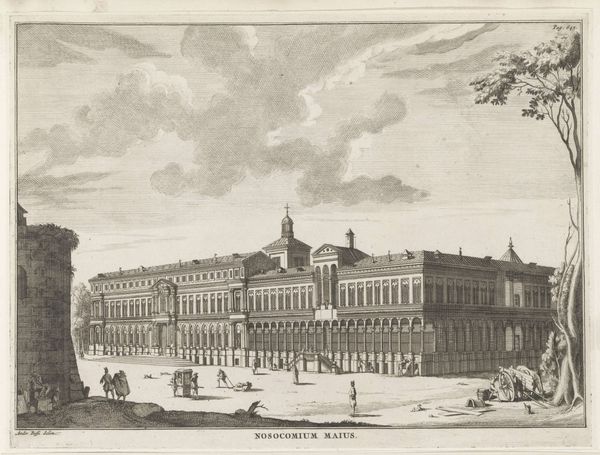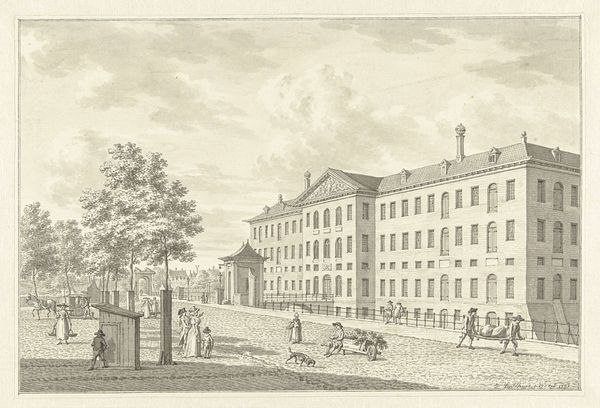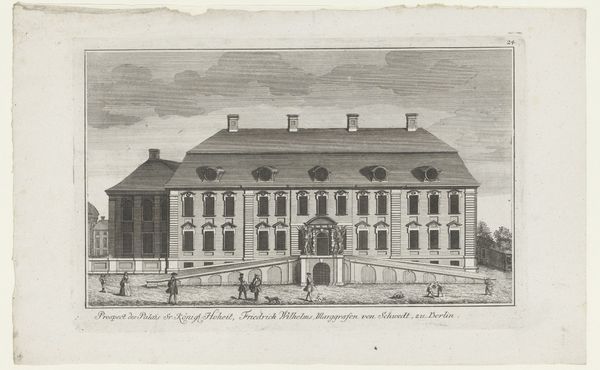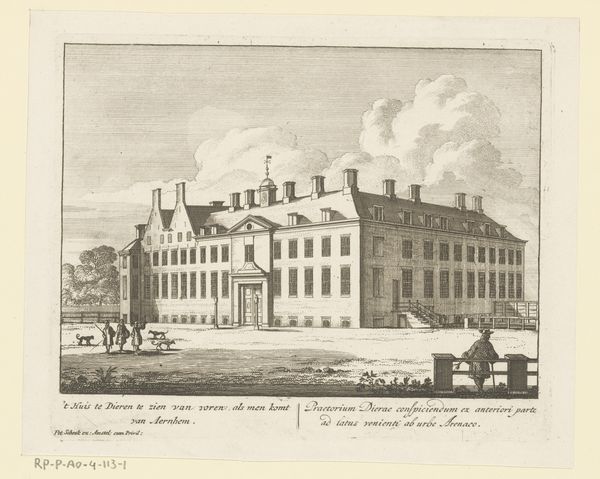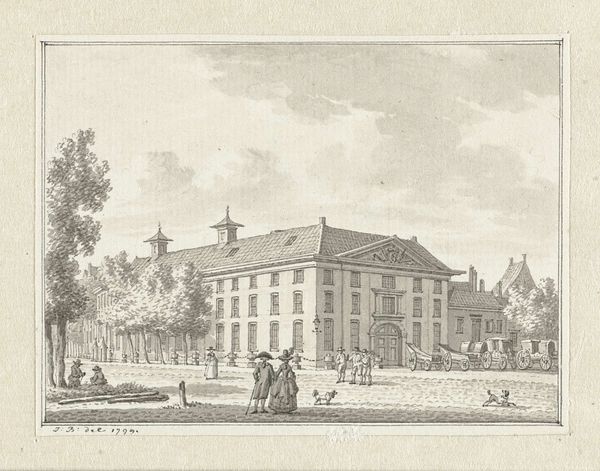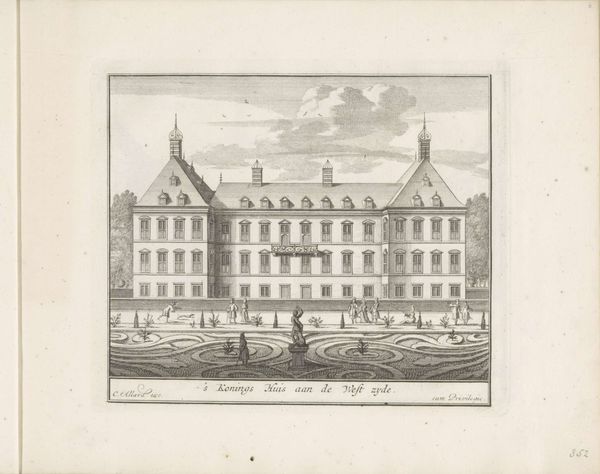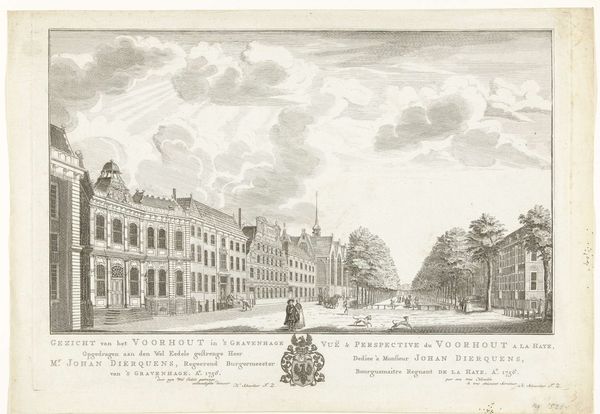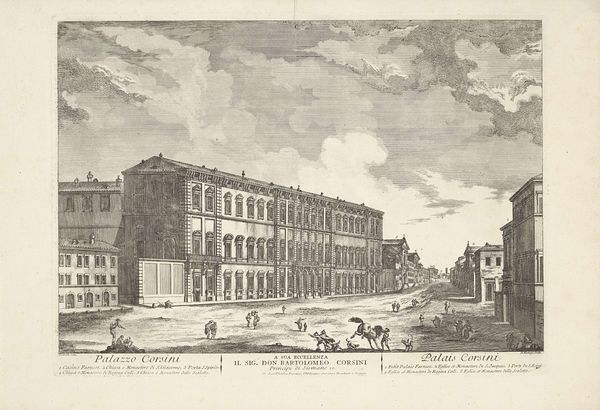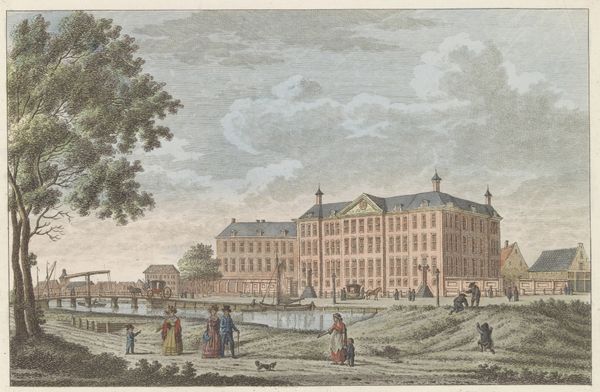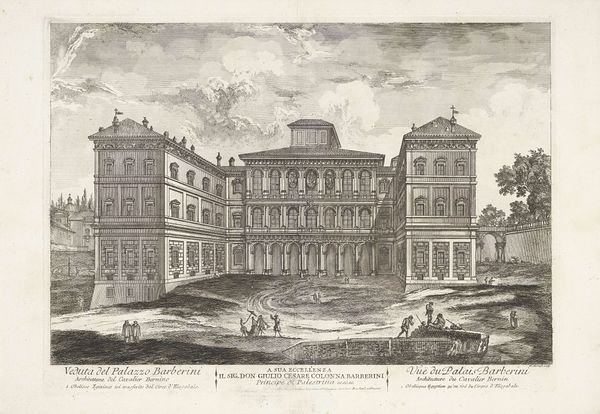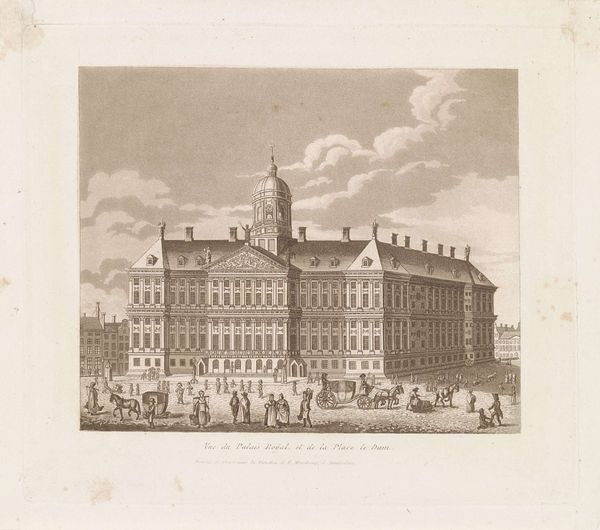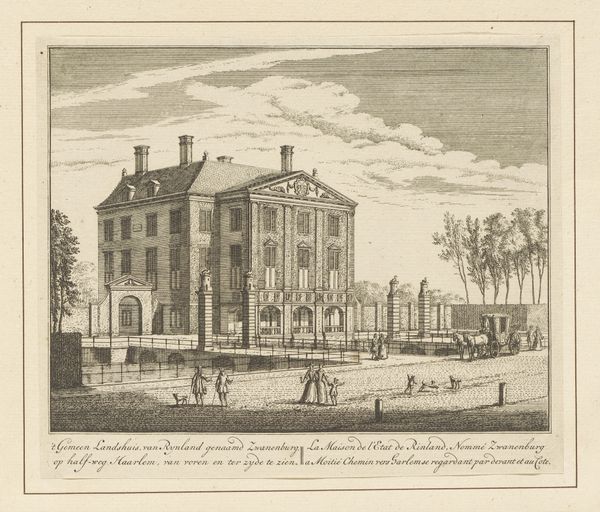
Het Keizerlijk Paleis op de Dam te Amsterdam, 1811 1800 - 1811
0:00
0:00
engraving, architecture
#
neoclacissism
#
dutch-golden-age
#
cityscape
#
history-painting
#
engraving
#
architecture
Dimensions: height 264 mm, width 371 mm
Copyright: Rijks Museum: Open Domain
Curator: This is Ludwig Gottlieb Portman's "The Imperial Palace on the Dam in Amsterdam, 1811," an engraving showcasing the grand Neoclassical architecture. What strikes you first? Editor: A certain somber elegance, like a meticulously arranged stage set just before the players arrive. The monochromatic rendering really focuses my eye on the details. Curator: Engraving was, of course, a key means of disseminating architectural and topographical views. Look at the precision in capturing the palace's facade. Portman really highlights the imperial ambition through this visual depiction of power. Editor: I'm immediately thinking about the role this type of artwork had, how it must have allowed a broader audience to access and envision architectural marvels. It is such a clever process to achieve something that feels almost photorealistic, and all the lines. I think it's wonderful, personally. Curator: Indeed. We see Neoclassicism interwoven with aspects reminiscent of the Dutch Golden Age. This artwork served not only as an architectural record but also became entangled in themes of nationhood. Amsterdam at this moment in history was a strategic place. Editor: Makes you wonder about the engraver's own political leaning, doesn't it? Did they see themselves as celebrating a new era, or documenting a loss of something older? It would feel as though the artwork would offer social commentary. Curator: Those are questions that continuously intrigue us as curators. Considering the meticulous work, it prompts questions regarding its place within the culture of prints and reproducibility. This speaks directly to an understanding of the labor and its social reach. Editor: I am sure that if we look deeper into its craft, materiality and consumption, it's like opening Pandora’s Box, wouldn’t you agree? Well, Portman has certainly given us something to think about. Curator: Absolutely, it allows one to delve more deeply into the historical conditions of artistic labor and circulation during the time it was made. Thank you!
Comments
No comments
Be the first to comment and join the conversation on the ultimate creative platform.
